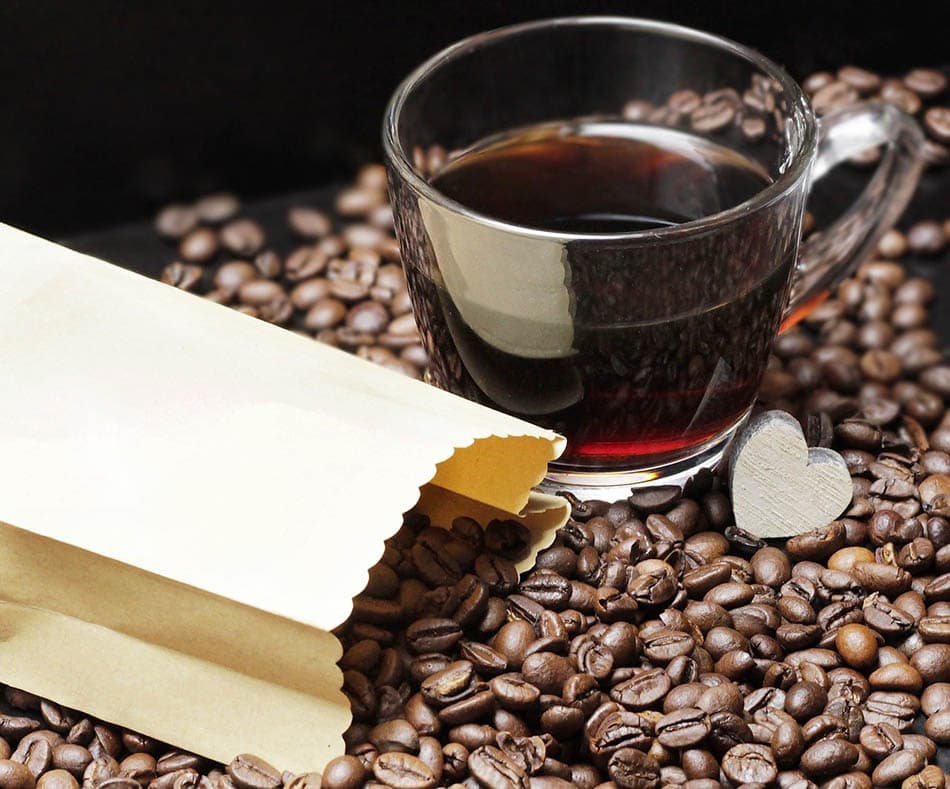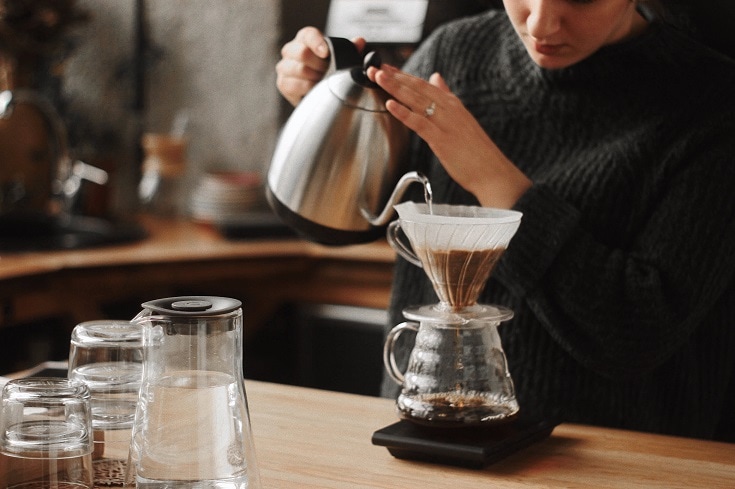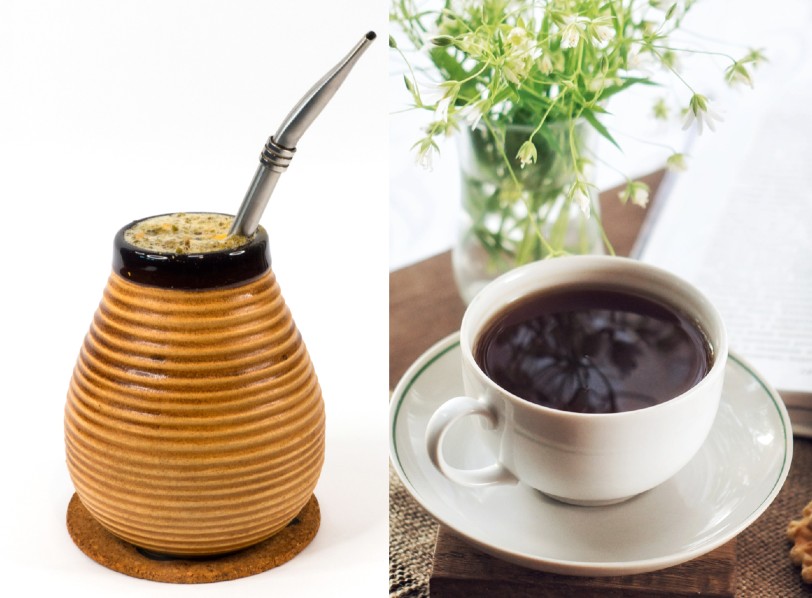
Coffee is deceptively complicated. On the surface, coffee is only two things: ground cherry seeds (the beans) and water. However, from these two ingredients blossoms a world of emergent complexity as one considers how green coffee beans are roasted and ground and how you prepare the water for brewing.
In this article, we take a deep dive into the science of coffee, covering everything from how the water you use affects your coffee’s taste to why grinding your own beans at home makes your coffee better. Grab your lab notebook and a hot cup of coffee, and get ready to explore the world of coffee science.

Botany: The Coffee Plant

We will start at the root, the root of the coffee plant, that is. Before the roaster gets their hands on a batch of green coffee beans, the coffee farmer has already put untold hours into cultivating the perfect coffee tree. Coffee grows on low trees, and what we call the coffee bean is the seed of the coffee tree’s fruit.
Most coffee cherries contain two seeds of similar sizes and weights, and each healthy tree produces about 2,000 cherries per year. Keeping the conditions right for their coffee trees is a coffee farmer’s top priority, and even small changes to a tree’s environment can affect its yield. All plants need water, sunlight, and healthy soil, but coffee trees need some extra attention to reach their full potential.

The majority of coffee production happens between the Tropic of Capricorn and the Tropic of Cancer, in a region of the world colloquially known as the coffee belt. Coffee thrives in hot and humid areas that have alternating periods of heavy rainfall and intense sunshine. Additionally, soil quality plays an essential role in the healthy development of the coffee tree. Farmers take great pains to ensure their soil is rich in nutrients and contains enough nitrogen, phosphorus, and potassium, specifically.
Coffee is a relatively resilient plant, although farmers prefer high-altitude environments to get the most out of their coffee trees. Farms at higher elevations have two main advantages. First, comparatively harsh conditions at higher elevations cause coffee trees to grow slower than they do at lower elevations. When the maturation process takes longer, the coffee cherries have more time to absorb nutrients and develop complex sugars, resulting in a more flavorful coffee bean.
Second, high-altitude farms often have angled growing fields thanks to the uneven terrain of mountainous regions. Sloped farmland aids natural drainage and reduces the amount of water coffee trees can absorb. When coffee trees consume less water, the growing process slows, giving the cherries more time to develop.

Coffee Chemistry 101:
Roasting
Alright, enough plant stuff, let’s move on to some chemical reactions. Coffee roasting is a rich, complex process filled with nuance and subtlety. Expert roasters perfect their craft over years, and their battle is mostly with chemistry. The first challenge in coffee roasting is heating green coffee beans enough to kickstart certain chemical reactions without heating them so much that they undergo pyrolysis.

Pyrolysis is a chemical process that occurs when a material is heated above a threshold temperature called its decomposition temperature. Pyrolysis is the first step in combustion, and wood charring is an example of extreme pyrolysis. If you think that combustion and charring both sound bad for coffee beans, you’re on the right track. Coffee roasters take great pains to ensure their coffee beans never come close to undergoing full pyrolysis.
On the other hand, another chemical reaction called the Maillard reaction is what coffee roasters seek. The Maillard reaction takes place when food is heated and involves the interaction of sugars and amino acids. Browned food gets its unique flavor from the Maillard reaction, and baked crusts, browned meat, and caramelized onions all owe their delicious flavor and texture to the Maillard reaction.
The Maillard reaction starts at about 302°F, and roasters pay careful attention to their beans when the roaster reaches this temperature. How long a batch of beans undergoes the Maillard reaction has a dramatic impact on its flavor. Shorter durations create coffee beans with more sweetness and acidity, while longer durations take on a maltier characteristic.

Brewing
Chemistry plays an important role in coffee roasting, but it is also a key player in brewing coffee. In general, there are two main classes of brewing methods: immersion brewers, where coffee grounds soak in water, and percolation methods, where water passes through ground coffee. The differences between immersion and percolation brewing come down to how they facilitate the interaction between coffee grounds and water.
It is natural to assume that brewing coffee is all about giving coffee grounds enough time to dissolve in water, but while dissolving is an important factor, it’s not the most important factor. Coffee grounds dissolve quickly once they contact water; what takes more time is the process of moving flavor molecules from the interior of the coffee grounds to the edge. Flavor travels slowly in a particle of ground coffee, but it moves faster at higher temperatures, meaning we can extract more flavor from coffee grounds if we keep them at higher temperatures.
Immersion style brewing methods—like French press brewing—keep the coffee grounds at a higher temperature than percolation brewing methods—like pour overs. To extract a similar amount of flavor from both a French press and a pour over, we need to level the playing field by making the French press coffee grounds take longer. Since flavor travels faster in a high-temperature French press, baristas grind the beans more coarsely, so the flavor has farther to go from the center of the particles to the edge.

Water
What water you use also plays an important role in brewing coffee. You might think that all water is the same, but, in reality, tap water varies significantly from one location to another. The mineral content of water changes your coffee’s flavor directly by imparting its own taste on your cup and indirectly by changing the extraction process. There is a lot of debate among coffee experts about what mineral concentrations make the best coffee, and there is some consensus. Some companies make mineral packets for customers to add to distilled water to get the optimal mineral profile for brewing coffee.
Grind Size
You can make an argument that grind size is more of a physics topic than chemistry, but since the grind size affects extraction and extraction is a process rife with chemistry, we’re going to keep it under the chemistry category.
We already discussed grind size when comparing French press brewing with pour-over brewing, but we can even go one step finer—pun intended.
Grinding coffee shortly before you brew it is one of the best ways to make your coffee more flavorful, and the reason has a little to do with chemistry. Freshly ground coffee is fresher than pre-ground coffee because freshly ground coffee hasn’t been in contact with air for an extended period of time. When coffee is ground and exposed to the air, it starts to oxidize. Oxidation fundamentally changes the chemical composition of coffee, making it unsuitable for drinking. It isn’t dangerous, but it doesn’t taste very good. For comparison, oxidation is the process responsible for rusting, not exactly something that makes you think, “yum!”

Besides freshness, how coffee beans are ground also helps determine what flavors get extracted during the brewing process. Even the best, most expensive coffee grinders don’t produce uniform grind sizes. Some particles will be big, and some will be small, and the ratio of large to small particles determines how coffee tastes when you brew it. Which flavor compounds are extracted depends on how big a particle is, with smaller particles contributing stronger flavors. If your grinder has too many small particles, it will be difficult to extract the more subtle flavors, and your coffee will usually taste harsh and bitter.
A good coffee grinder will produce very similar grind size distributions every time you use it. Consistent grind size distributions make it possible to tune other brewing parameters like the temperature and extraction size to make your coffee taste better. Cheap grinders and pre-ground coffee often don’t have consistent grind size distributions, making it frustrating to try to get a consistently good cup.
If you only have enough money for one piece of coffee-making gear, make it a high-quality grinder. The impact a good grinder will have on your coffee’s quality is dramatic.

Class Dismissed
We hope you enjoyed this coffee science 101 crash course. We’ve barely scratched the surface of all the scientific intricacies that go into growing, roasting, and brewing coffee, but, hopefully, you now have a better overview of some of the complexity behind the coffee industry. A lot of thought goes into making coffee, and knowledge of chemistry is beneficial for people looking to squeeze every last drop of flavor out of their coffee beans. That’s all for today; the quiz is tomorrow!
Featured Image Credit: Pixabay















